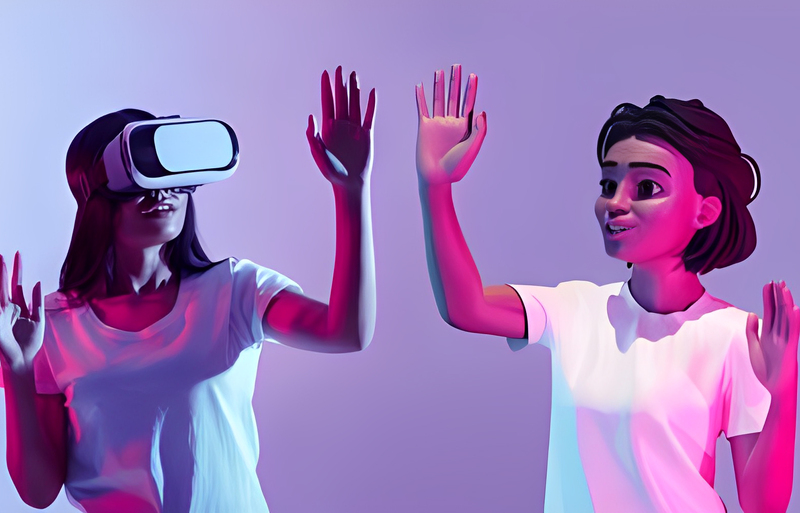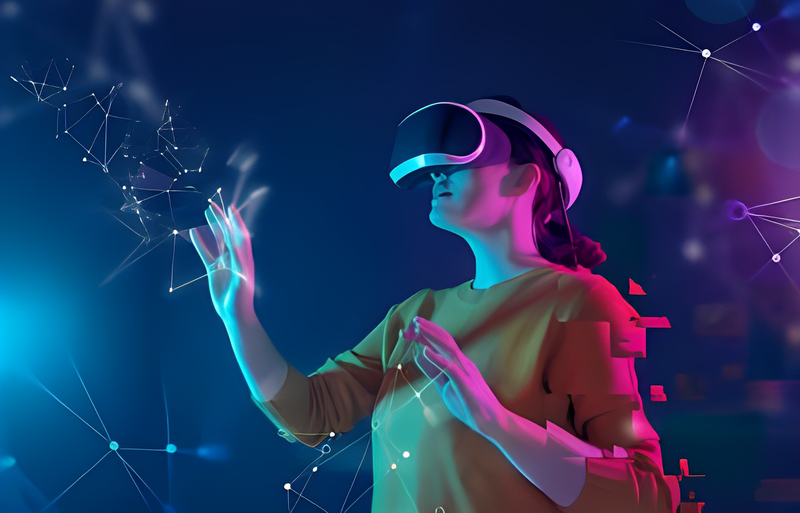The Synergy of AI and VR: Revolutionizing Immersive Experience
In the constantly evolving realm of technology, the fusion of Artificial Intelligence (AI) and Virtual Reality (VR) emerges as a groundbreaking force, fundamentally altering our interactions within the digital sphere. This dynamic synergy transcends mere innovation, constituting a profound revolution in immersive experiences with the capacity to redefine entire industries. The amalgamation of AI and VR is not confined to the boundaries of novelty; instead, it heralds a new era where the convergence of these technologies reshapes the way we perceive and engage with digital environments. This transformative alliance extends its influence across diverse sectors, permeating industries ranging from entertainment and gaming to education and healthcare. The implications of this union are far-reaching, promising a future where the synergy of AI and VR not only enriches our digital experiences but also contributes to the evolution of how we learn, entertain, and deliver healthcare services.
Unveiling the Marriage of AI and VR:
At the heart of this revolution lies the symbiotic relationship between AI and VR. Virtual Reality creates simulated environments, and Artificial Intelligence enriches these environments with intelligent, context-aware interactions. This collaboration transcends traditional boundaries, offering users experiences that are not only visually stunning but also dynamically responsive to their actions and preferences.
AI-Powered Personalization in Virtual Worlds:
One of the remarkable aspects of this synergy is the ability of AI to personalize virtual experiences. Imagine stepping into a virtual world where the environment evolves based on your preferences and behaviors. AI algorithms analyze user interactions in real-time, adapting the virtual landscape to create a personalized journey. Whether in gaming or simulations, this level of personalization enhances user engagement and immersion.

Intelligent Avatars and Natural Interactions:
AI introduces intelligent avatars into the VR space, elevating interactions to a whole new level. These avatars can understand and respond to natural language, gestures, and expressions, creating a more authentic and human-like interaction within the virtual environment. This opens doors for enhanced communication, collaboration, and training scenarios, making VR not just a visual experience but a fully immersive and interactive one.
Enhancing Learning and Training Through AI-Driven VR:
The synergy of AI and VR has profound implications for education and training. AI algorithms can analyze user performance within a virtual training environment, providing real-time feedback and adapting scenarios to optimize learning outcomes. From medical simulations to complex engineering training, this combination offers a safe and dynamic space for learners to acquire and refine skills.
Transforming Healthcare Experiences:
In healthcare, AI-powered VR experiences are making waves. From therapeutic applications for mental health to surgical simulations for training, the synergy brings a new dimension to patient care. VR environments, enhanced by AI, enable personalized treatment plans, immersive therapy sessions, and realistic medical training scenarios.
Challenges and Future Prospects:
While the synergy of AI and VR holds immense promise, it also comes with challenges. Overcoming issues of latency, ensuring seamless integration, and addressing ethical concerns related to data privacy are key considerations. However, as technology advances, these challenges are being met with innovative solutions.

Can AI and VR be combined?
Yes, AI (Artificial Intelligence) and VR (Virtual Reality) can be combined to create powerful and immersive experiences. The synergy of AI and VR involves integrating intelligent algorithms and technologies to enhance the capabilities of virtual environments. Here's how AI and VR can be combined:
Personalized Experiences:
AI can analyze user behavior, preferences, and interactions within a VR environment in real-time. This information is then used to dynamically adapt and personalize the virtual experience, creating a more engaging and tailored interaction for users.
Intelligent Avatars:
AI-driven avatars within VR environments can understand and respond to natural language, gestures, and expressions. This adds a layer of realism to virtual interactions, making them more authentic and human-like.
Adaptive Learning and Training:
In educational and training applications, AI can analyze user performance within VR simulations. The system can adapt scenarios based on individual progress, providing personalized feedback and optimizing the learning experience.
Healthcare Simulations:
AI-powered VR simulations in healthcare allow for realistic training scenarios for medical professionals. AI algorithms can simulate patient interactions, adapt scenarios based on practitioner responses, and enhance the overall training experience.
Therapeutic Applications:
AI-driven VR experiences are being explored in mental health therapy. The combination allows for personalized therapeutic environments that respond to the user's emotional state, providing a more effective and tailored therapeutic experience.
Enhanced Natural Interactions:
AI can enable more natural and intelligent interactions within VR environments. This includes understanding and responding to user input, creating a more immersive and responsive virtual world.
Data Analytics in VR:
AI can be utilized for analyzing vast amounts of data generated within VR environments. This data analysis can provide valuable insights into user behavior, preferences, and trends, helping organizations refine their VR experiences.
While the combination of AI and VR holds great potential, it also poses challenges such as addressing ethical concerns, ensuring seamless integration, and overcoming technical limitations. As technology advances, the collaboration between AI and VR is likely to open up new possibilities and redefine the way we experience virtual environments.
Conclusion:
The synergy of AI and VR is not just a technological collaboration; it's a gateway to uncharted possibilities. Together, they are revolutionizing immersive experiences, pushing the boundaries of what was once deemed impossible. As we stand at the intersection of AI and VR, the journey ahead promises a future where the line between reality and the virtual realm becomes increasingly blurred, opening doors to unprecedented opportunities and redefining the way we experience the world. The revolution is here, and it's transforming how we perceive, interact, and immerse ourselves in the vast landscape of the digital frontier.
Newsletter to recieve
our latest company updates
Comment